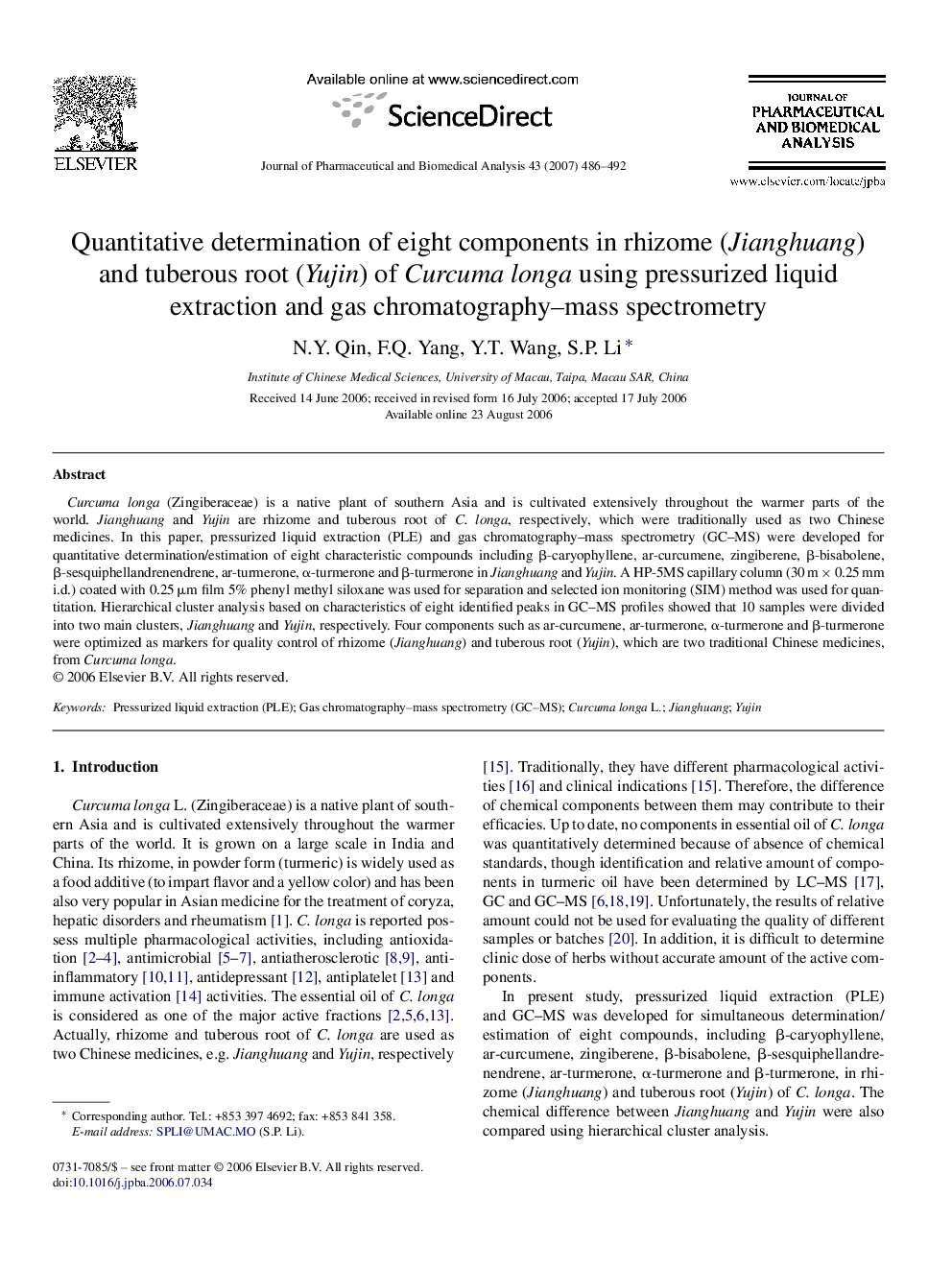| Article ID | Journal | Published Year | Pages | File Type |
|---|---|---|---|---|
| 1224348 | Journal of Pharmaceutical and Biomedical Analysis | 2007 | 7 Pages |
Curcuma longa (Zingiberaceae) is a native plant of southern Asia and is cultivated extensively throughout the warmer parts of the world. Jianghuang and Yujin are rhizome and tuberous root of C. longa, respectively, which were traditionally used as two Chinese medicines. In this paper, pressurized liquid extraction (PLE) and gas chromatography–mass spectrometry (GC–MS) were developed for quantitative determination/estimation of eight characteristic compounds including β-caryophyllene, ar-curcumene, zingiberene, β-bisabolene, β-sesquiphellandrenendrene, ar-turmerone, α-turmerone and β-turmerone in Jianghuang and Yujin. A HP-5MS capillary column (30 m × 0.25 mm i.d.) coated with 0.25 μm film 5% phenyl methyl siloxane was used for separation and selected ion monitoring (SIM) method was used for quantitation. Hierarchical cluster analysis based on characteristics of eight identified peaks in GC–MS profiles showed that 10 samples were divided into two main clusters, Jianghuang and Yujin, respectively. Four components such as ar-curcumene, ar-turmerone, α-turmerone and β-turmerone were optimized as markers for quality control of rhizome (Jianghuang) and tuberous root (Yujin), which are two traditional Chinese medicines, from Curcuma longa.
